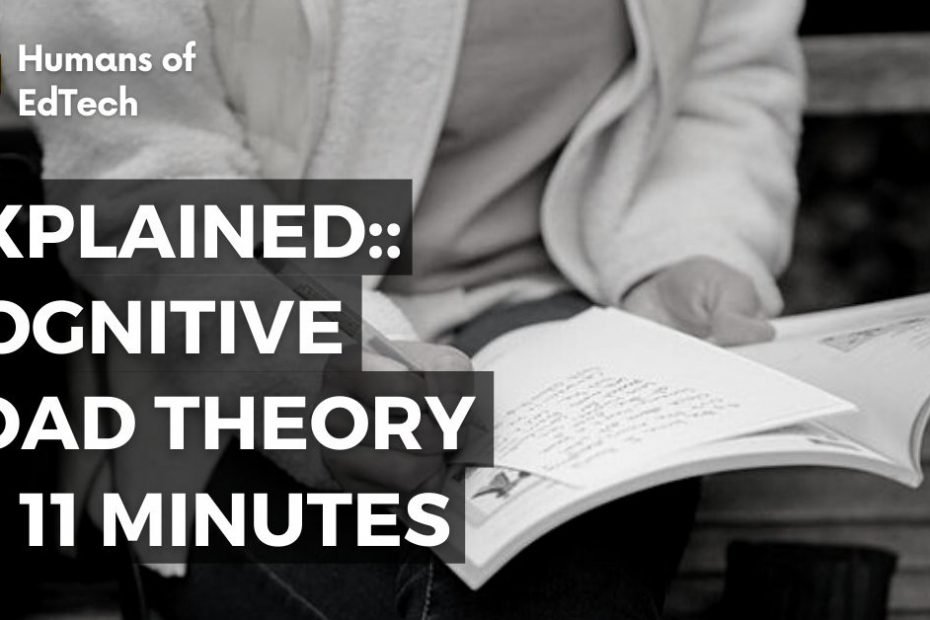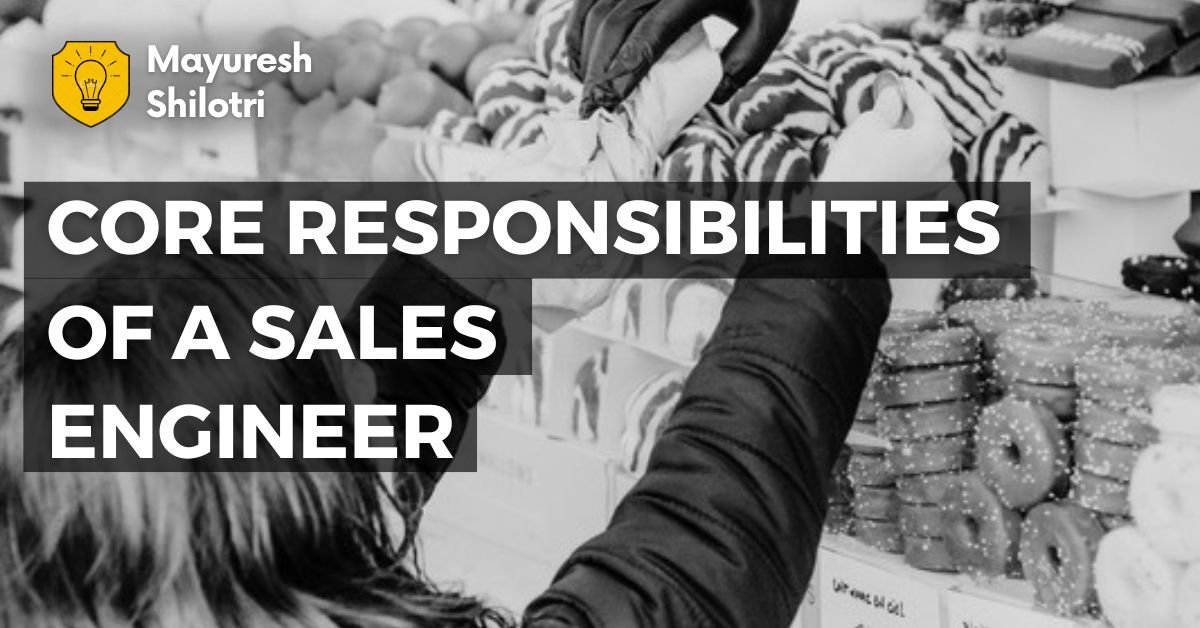Our short term memory, or working memory, can only retain a certain amount of information simultaneously. Cognitive Load Theory unlocks how and why we learn the way we do.
- WORDS:1720
- TYPE:Post
- VIDEO:1
- SLIDES:1
- TOPIC:Humans Of EdTech
- TIME:10 Minutes
Welcome to Humans of EdTech, my name is Mayuresh. And today we are going to look at the cognitive load theory. So I think we looked at a few different theories of learning, this is another one in the series. And we’re going to have a slightly detailed treatment of this particular thing.
And let’s just quickly jump into what this theory is all about. So what do you expect over here, we are going to look at what is the cognitive load theory, we will look at the three types of cognitive load, we essentially are going to understand what cognitive load theory is, more or less all about. And we’ll just take it from there.
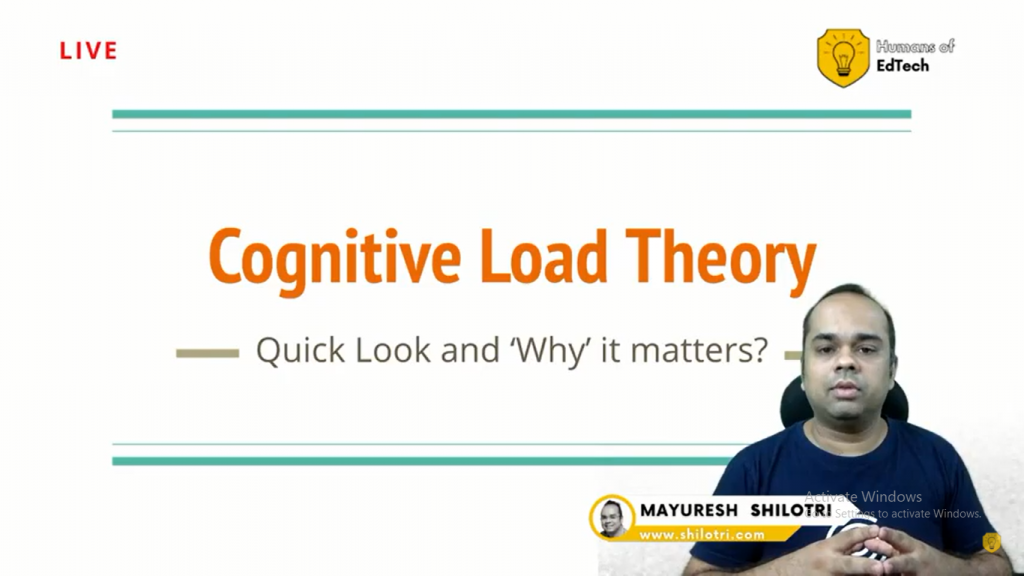
Before that, let’s quickly understand how the learning/ memorization/committing to the memory happens for human beings. So what typically happens is that there is information that comes through you from your sensory organs.
And that information is then consumed by and retained in your sensory memory. Some of it is forgotten, some of it is getting committed to the working memory. If you rehearse, if you have spaced repetition, if you have some sort of practice, then it’s committed to the long term memory and that’s from that’s where you typically drive it from, but there is forgetting that happens at both the levels at all the stages and steps. So, let’s look at you know, what is cognitive load.
So, let me try and make it very simple, there are three types of coming to loads. One is the inherent complexity of the subject matter. Now, this is what we call the intrinsic cognitive load, but if you are not familiar, or something that is, has a higher level of difficulty, higher level of familiarity, then it is going to be something that is difficult.
Things that require you to have mathematical concepts in place, which you are not well versed with, or maybe you are well versed with, but they are inherently very complicated, where it requires extension of concepts, which is beyond the basics what you do from your, kg to 10 per store or your high school, then I think typically those kind of things, which is which has its own inherent difficulties.
Second is the extraneous difficulty. So, what is typically means is that difficulty that comes into play, because of the way the subject matter is either presented to you, or by having some sort of I would not say interference effects, but additional pieces of information which inherently increase the complexity or difficulty of understanding, but that is not really the virtue of the inherent material or the subject or the matter under consideration. So, that’s the extraneous difficulty.
And third is the Germane. So, let’s jump into this a little later. But what it essentially means is that it is used in forming new schemas, let me make it more simpler, it is used in generating new understanding, it is used to generate fresh connections, something that you know, and something that is new for you.
And once you connect both of these two things by some sort of concept, idea thought, you generate a new schema for yourself, new thought process, new structure for yourself. And that kind of a load is something that is desirable. And that is the third type of load.
So let’s look at intrinsic, which is the inherent difficulty of the subject extraneous which arises because of the way the subject is presented. And third is the Germane, which is essentially used to form those new schemas, new structures in place, let’s now quickly jump into some of these things.
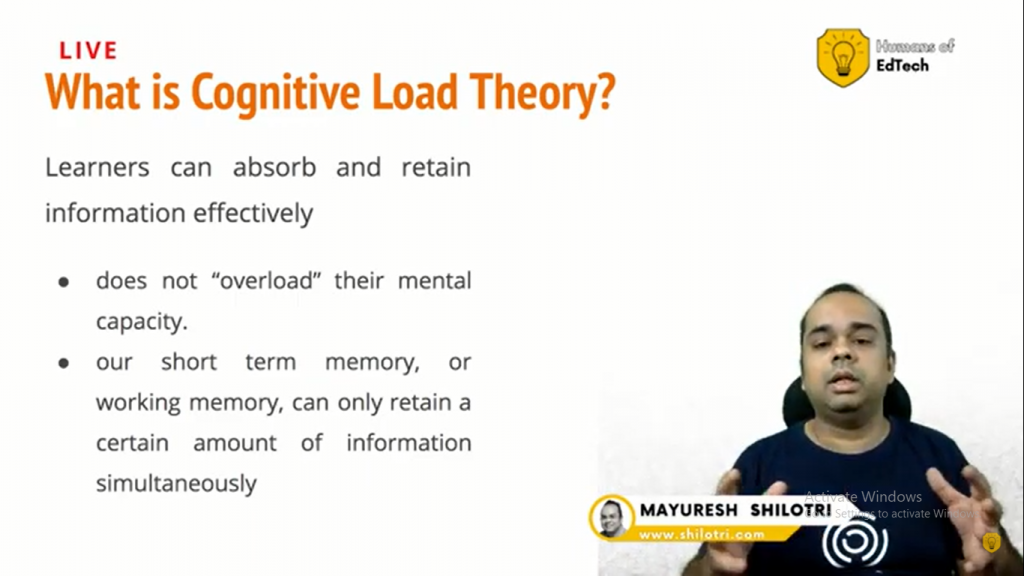
The Cognitive Load Theory
You know, the thing is, you don’t want to be overloading the learner. Because learners can absorb and retain the subject matter that has been taught to them, effectively, as long as they are not getting overburdened, if they’re not getting intimidated. As long as they are able to process all of those things in their sensory working memory, and able to retain and commit to the next level, I think we’re all good.
The moment passes some of those thresholds and becomes a little difficult. This is one of the simplest kinds of definition of all of these things. But that’s how the cognitive load is. You’re going to hear this word called a schema again and again and again.
For all practical purposes, schema is essentially a mental structure or mental model, which helps us think, understand and interpret something in a very clear way, say things like you’re able to visualise how the roots of the trees look like in a two dimensional perspective.
And now we should be able to extend that as a concept and say that a structure in a company in a multinational organisation also looks similar. So that is essentially you’re taking a structure from one particular field domain and super imposing or trying to understand a new domain or structure the basis of that particular thing, that’s one of the simplest examples of schema. It is essentially some sort of a structure that you have in your mind.
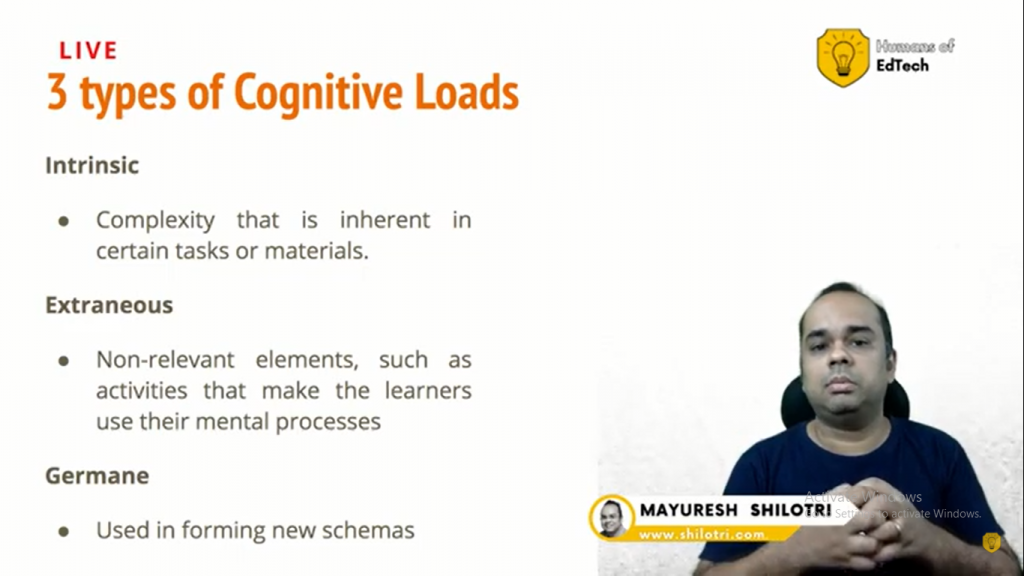
Types of Cognitive Loads.
Let’s quickly jump on to understanding those three types of cognitive loads once again, and what is it that you should be increasing? And what is it that you need to work on? So the intrinsic load can typically be taken care of with good instructional sequencing, if you’re able to sequence out your subject matter in a very decent way that I think it is going to make the intrinsic load simpler.
If you’re able to break down the subject matter into smaller pieces, build on to something established, consulted, build onto something established, and go step by step, I think it will do a good job, the critical path, the sequence is going to matter over here. The extraneous load is essentially if you’re able to get rid of all the information that is not required, that is redundant.
If you’re able to bring in the right kind of instructional design, with respect to the learning part of it, then I think that part is going to get optimised. So intrinsic, and the extraneous load can be optimised in these two particular ways.
The germane load is something that you want to maximise for the learner, you want your subject matter to trigger fresh thought process in the learner, you want them to be able to ask questions, you want them to be able to connect with their existing body of knowledge, to be able to not just, you know, memorise assimilate, but be able to ask questions, build on top of it, create something on top of it, going the taxonomy.
So those are the kind of things so that’s what you essentially need to, you know, optimise for you need to minimise the intrinsic load, you want to minimise the extraneous, and you want to maximise the germane load. So that’s essentially, what is the recipe?
So, how do you do this? How does the teaching learning process work? So we’re going to do a whole new complete video on top of this, where we’re going to look at the 10 effects of the cognitive load theory, and this is going to have a much more prescriptive value to it.
So we’re going to look at and at that point in time with respect to how you, take care of some of these things. What we’ll do is in this particular session, and to wrap this session up is we’re going to understand the Cognitive Theory of Multimedia learning.
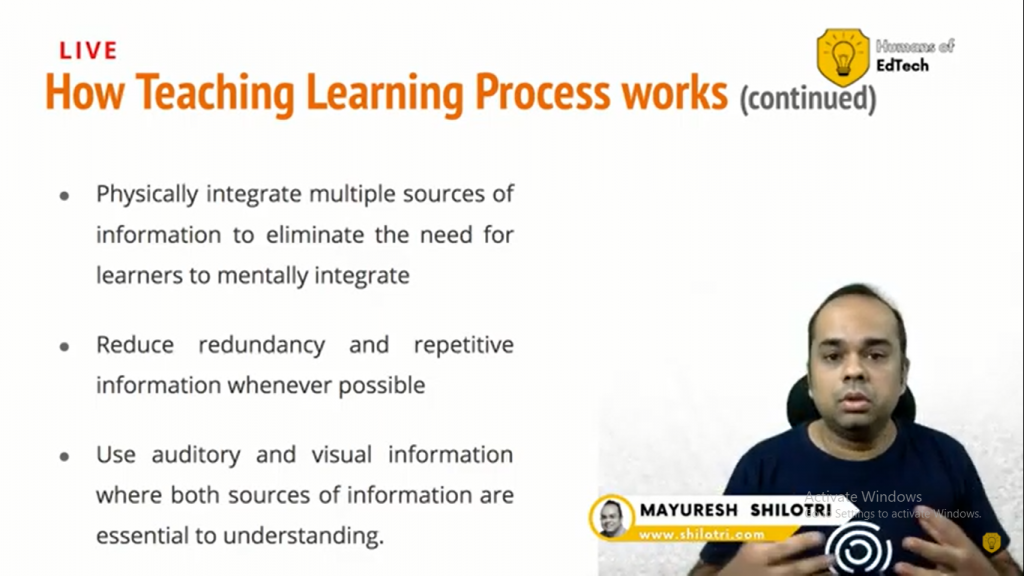
What is cognitive theory of multimedia learning?
So what you see over here is that there is a multimedia presentation, which has both words, and which also has images. Now, your sensory organs are going to assimilate both the words and the images, your ears are going to pick up the words and the sounds that typically come up, and your eyes are going to consume the words that it sees and the images that it is able to see.
And your working memory is then going to organise both the words and the images, it is going to bring together the verbal model, the pictorial model, and also the existing knowledge that it has, and it is going to integrate all of it. So when a lot of us when there is like a vast body of research and says that multimedia based learning is one of the most effective ways of learning.
So Professor Richard Mayer has done a great amount of work in this particular field and is very well referred as the guru of multimedia learning, and the research that the body of research that exists around that.
I encourage you to check all of those things, which will give you a good understanding of what the whole cognitive load theory is with respect to the multimedia based resources.
So I hope this helps from a cognitive load theory perspective. What we have done in this particular presentation is we’ve just tried to introduce the cognitive load theory. Here is a basic simple thing. If the learner is going to be overburdened then he is not going to be able to learn it.
So we have broken down the cognitive load into three pieces, the intrinsic, extraneous and germane. We want to minimise the intrinsic and the extraneous load by good sequencing and by good instructional design.
And for the germane learning, you want to be able to trigger those connections for those curiosities and questions from the learners to be able to build those new structures and schemas in people’s mind to be able to explain their learning.
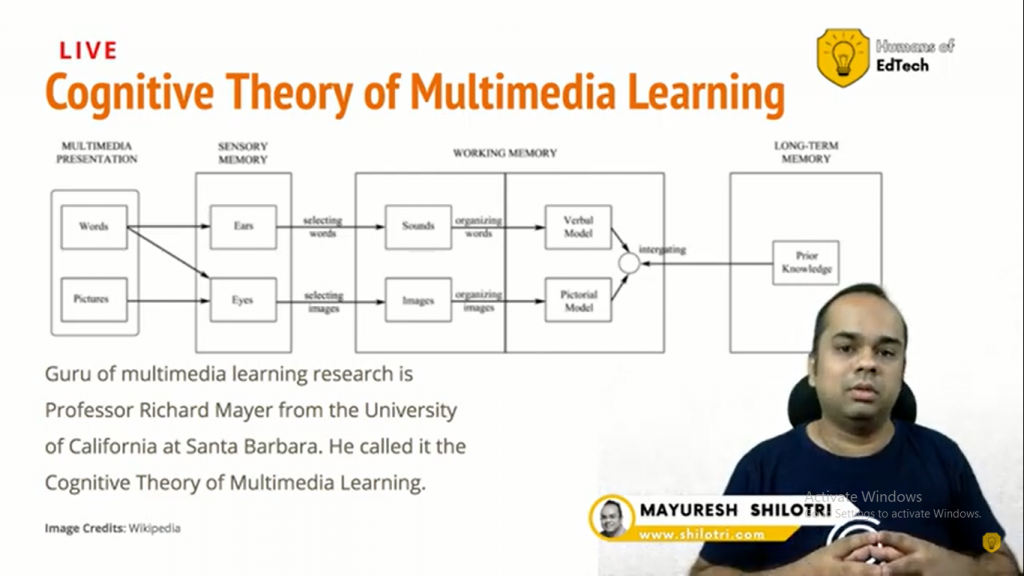
So that’s the real simple summary of what the cognitive load theory is all about. Thank you so much. do follow us for more resources on EdTech at Humans of EdTech.com or Shilotri.com. And I’ll see you soon. Thank you so much, and bye.
Photo by Budgeron Bach from Pexels.
Join to get sneak peek into what's happening
I write about books, experiences, product, UX, EdTech, early stage growth, validation – mostly tech. Subscribe if these topics interest you. Once every 15 days emailer. I promise – No spam. (I am known for it otherwise) 😉
